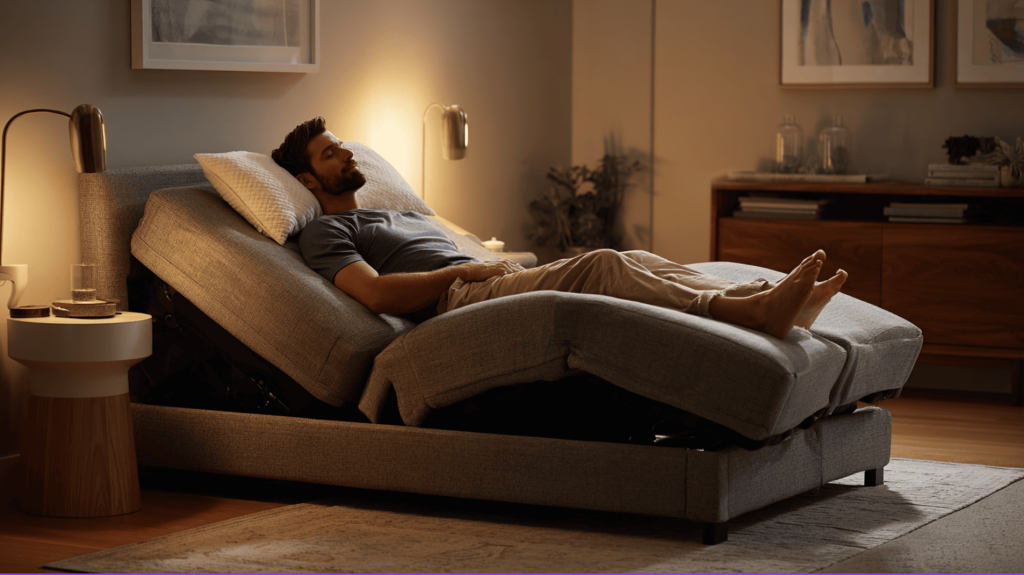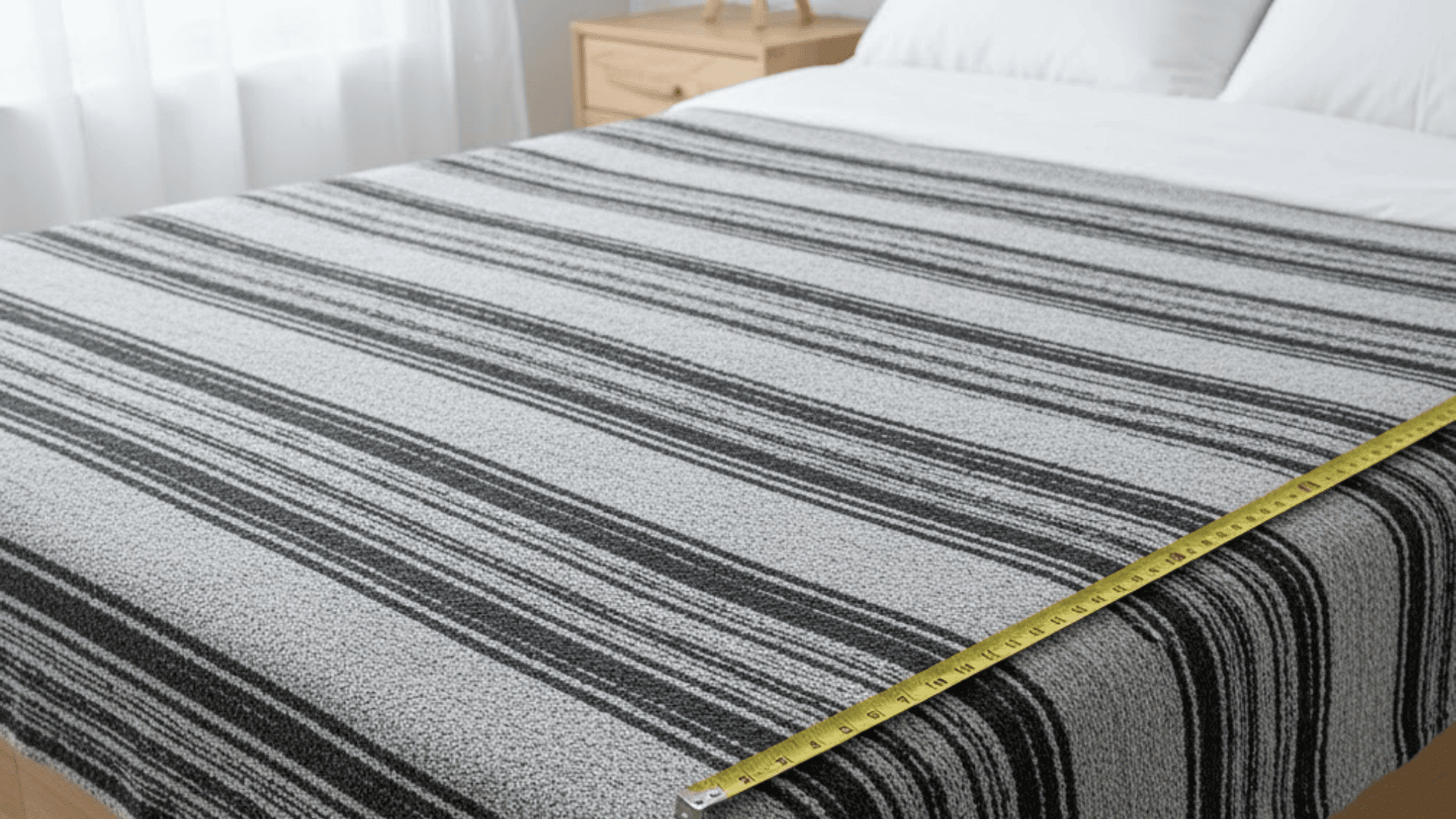Are you tired of tossing and turning all night because of sacroiliac joint pain keeping you awake? You’re definitely not alone in this struggle, as millions of people deal with this uncomfortable condition daily.
Finding the right sleeping position for sacroiliac joint pain relief can feel like searching for a needle in a haystack sometimes.
I know how frustrating it gets when your body won’t let you rest peacefully after long days. The good news is that simple changes in how you position yourself can make a huge difference.
Your pilgrimage toward pain-free nights starts with understanding what works best for your unique situation. Sweet dreams are closer than you think!
What is Sacroiliac Joint Pain and Why Does It Affect Sleep?
The sacroiliac joint connects your lower spine to your pelvis on both sides of your body. This joint helps transfer weight from your upper body down to your legs when you move.
SI joint pain often comes from injuries, pregnancy, arthritis, or uneven leg lengths that stress the area. Poor posture and repetitive movements can also cause inflammation and discomfort in these joints.
Pain typically gets worse at night because lying down changes how weight is distributed across your joints. Your body also produces fewer natural pain-fighting chemicals while you sleep, making discomfort more noticeable.
Proper spinal alignment during sleep helps reduce pressure on the SI joint and surrounding muscles.
Best Sleeping Positions for Sacroiliac Joint Pain Relief
You can try several different sleeping positions to help ease your SI joint pain at night. I recommend testing these seven proven positions to find which ones work best for keeping your spine aligned and reducing joint pressure.
1. Side Sleeping with Pillow Between Knees

This position helps reduce stress on your sacroiliac joint by keeping your hips, pelvis, and spine properly aligned all night. It prevents twisting in the lower back, which often worsens SI joint pain.
To do this, lie on your pain-free side and place a firm pillow between your knees. Keep your knees slightly bent and stacked. Make sure your head and shoulders are supported by the mattress for full comfort.
2. Back Sleeping with Pillow Under Knees

This sleeping position helps relieve pressure from your lower spine and pelvis by allowing your back to rest in a neutral shape. It supports the natural curve of your spine and reduces strain on your sacroiliac joint.
To try it, lie flat on your back with a firm pillow under both knees. Keep your legs relaxed, arms by your sides, and use a soft pillow to support your neck.
3. Modified Side-Lying with Pillow Under Waist

This helps prevent sagging in the middle of your body, which can pull on your pelvis and worsen sacroiliac joint pain. Supporting the waist keeps the spine straight from top to bottom.
To do it, lie on your side and place a small pillow or rolled towel under your waist. Make sure your top leg rests on another pillow and your neck stays in line with your spine.
4. Reclined Back Sleeping

This position helps reduce pressure on the sacroiliac joint by lifting the legs and head slightly, easing strain across your pelvis. It spreads your body weight evenly and takes stress off your lower back.
To get into position, use a wedge pillow or adjustable bed to raise your head and knees. Your body should feel gently curved, with both legs bent and fully supported, while your arms rest comfortably.
5. Three-Quarter Side Sleeping

This sleeping style reduces joint rotation by keeping your spine stable and your hips from twisting, which helps calm sacroiliac pain. It’s a blend of side and stomach sleeping that lowers tension across your lower back.
Lie partly on your stomach and partly on your side. Place one pillow under your top leg and one under your belly. Keep your neck turned gently to the side for comfort.
6. Back Sleeping with a Pillow Under the Lower Back

This position supports the curve of your spine and offers extra relief for both the lower back and sacroiliac area. It helps prevent your back from flattening uncomfortably against the bed.
For this, lie on your back with one pillow under your knees and a small towel roll under your lower back. Make sure both supports feel natural and don’t push your body upward too much.
7. Side Sleeping with a Full-Body Pillow

Using a full-body pillow helps keep your spine, hips, and shoulders steady and aligned, easing pressure on the sacroiliac joint. It also prevents your body from twisting during sleep, which can worsen pain.
To do this, lie on your side and hug a full-body pillow. Ensure that the pillow is positioned so that one part fits between your knees and another part supports your chest. Keep your neck relaxed and well supported.
Best Mattress and Pillows for SI Joint Support
Here are some top mattresses and pillows that can help reduce your SI joint pain during sleep. I’ve picked products that focus on proper spinal alignment and pressure relief.
| Product Name | Material | Key Features |
|---|---|---|
| Saatva Classic Mattress | Pocketed coils, memory foam | Dual coil system, medium-firm, breathable |
| Brooklyn Bedding Signature Hybrid | Gel-infused foam, coils | Multiple firmness options, edge support, and cooling |
| Dynasty Mattress CoolBreeze | Gel memory foam | Cooling gel, medium-firm, pressure relief |
| Zinus Green Tea Memory Foam | Gel-infused memory foam | Budget-friendly, green tea infusion, certified |
| Tempur-Pedic TEMPUR-Cloud Pillow | Tempur material | Excellent contouring, pressure relief, and neck support |
| Coop Home Goods Adjustable Pillow | Shredded memory foam | Adjustable loft, cooling, and custom alignment |
These products offer different price points and features to match your specific needs and budget. You should test any new mattress or pillow for at least a few weeks to see if it helps your pain.
When to See a Doctor or Physical Therapist

You should see a doctor if your SI joint pain lasts more than a few weeks. Sharp shooting pain down your leg, numbness, or tingling also needs medical attention right away. Pain that gets worse instead of better with rest is another red flag.
A physical therapy visit usually starts with questions about your pain and a movement assessment. The therapist will assess your walking, bending, and movement patterns to identify problem areas.
Common treatments include specific stretches, core strengthening exercises, and manual therapy techniques like joint mobilization. Your therapist might also teach you proper body mechanics for daily activities. Some patients get relief from dry needling or electrical stimulation treatments.
Final Words
Getting better sleep with sacroiliac joint pain doesn’t have to remain a distant dream for you anymore. I hope these sleeping positions for sacroiliac joint pain relief help you find the comfort you deserve each night.
Remember that finding your perfect position might take some experimenting, but don’t give up on yourself.
Your body will thank you when you discover what feels right and stick with it consistently. Be patient with the process, and listen to what your joints are telling you each morning.
Tonight could be the beginning of your best sleep yet, so comment below and share your success stories!









